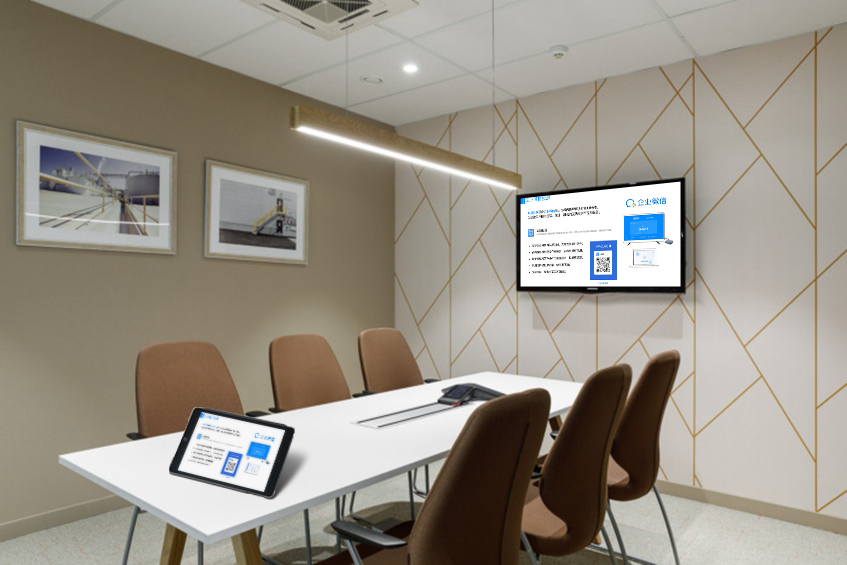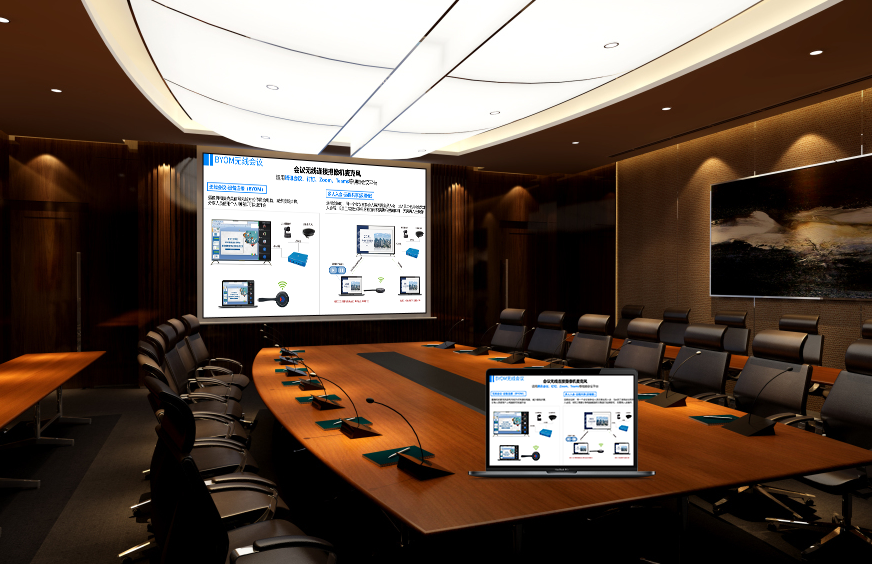Screen Mirroring: Making Device Content Flow More Efficiently
Screen mirroring technology serves as a bridge connecting small devices to large screens. With its simple operation, stable performance, and broad applicability, it allows content from phones, computers, tablets, and other devices to be easily displayed on a large screen. This covers various scenarios like office, education, and home entertainment, making information transfer more direct and collaboration smoother.
I. Diverse Connection Methods for Effortless Content Mirroring
Screen mirroring supports both wireless and wired connection methods, meeting the needs of different scenarios. For wireless connections, you simply need to connect your phone, computer, or other device to the same Wi-Fi network as the large screen. Using the device’s built-in mirroring function, you can quickly pair them and mirror your content in seconds. In a meeting room, participants don’t need to carry various cables; they can mirror their proposals to the large screen from their phones, saving valuable time on device setup.
For scenarios with an unstable network or no wireless environment, a wired connection is a reliable choice. By connecting your device to the large screen with an HDMI cable, you can stably mirror product videos or promotional images, even at an outdoor exhibition with a poor signal, ensuring uninterrupted information delivery.
II. Broad Device Compatibility, Breaking Down System Barriers
Whether you have an Apple phone or tablet with iOS, an Android device, or a computer running Windows or macOS, you can achieve smooth screen mirroring. In an educational setting, a teacher can prepare lessons on an Apple computer and mirror them directly to the classroom’s large screen. A student’s assignment completed on an Android tablet can also be easily mirrored to share with classmates.
Devices from different brands can also collaborate seamlessly. Client data from a Huawei phone can be mirrored to a Xiaomi TV for a presentation, and a design proposal from a Dell computer can be mirrored to an Apple monitor for a team discussion. This completely breaks down the limitations of device brands and operating systems, allowing for more liberated content flow.
III. High-Definition and Stable Transmission for Quality Content
Screen mirroring technology supports high-definition video transmission. 1080P Full HD is a basic feature, and some scenarios even support 4K Ultra HD output, ensuring clear details and accurate color reproduction. When watching a movie, the characters’ expressions and the scene’s atmosphere feel as if you are right there. When displaying complex charts and data, every detail is presented clearly, helping viewers accurately grasp the information.
The transmission process is also stable with low latency and excellent audio-visual synchronization. When watching a live sports event, the mirrored picture has virtually no delay compared to the live action, capturing the excitement of a goal at the moment it happens. In a video conference, the speaker’s voice and visuals are synchronized, making remote communication more fluid and natural.
IV. Rich Scenario Applications, Enhancing Efficiency and Experience
(I) Office Scenarios
In meetings, screen mirroring makes presentations simple and efficient. Attendees can instantly mirror their ideas and data from their phones or computers to the large screen for everyone to view and discuss. Using the large screen’s annotation feature, they can directly mark key points and suggest changes on the mirrored content, making discussions more focused and significantly improving decision-making efficiency. In a remote meeting, locally mirrored documents and video feeds of remote participants can be displayed in a split-screen, making long-distance collaboration feel like a face-to-face conversation.
(II) Educational Scenarios
Teachers can use screen mirroring to display courseware and videos on the classroom’s large screen, making it easier for students to see and focus. In class, students can mirror their problem-solving steps or creative work to interact with the teacher and classmates, which enlivens the classroom atmosphere and boosts student participation. For science lab courses, the experimental process can be mirrored in real-time, allowing every student to clearly observe the details.
(III) Home Entertainment Scenarios
On weekends at home, you can use phone screen mirroring to cast a movie or TV show to the TV. The family can gather around to watch and enjoy the immersive experience of the large screen. At a friend’s gathering, everyone can take turns mirroring photos and videos from their phones to share life’s fun moments, enhancing bonds with one another. You can also mirror games for a more exciting gaming experience on a large screen and more fun multi-player interaction.
Screen mirroring technology, with its simple operation, broad compatibility, and stable performance, enables the efficient flow of device content across different scenarios. It brings great convenience to office collaboration, educational interaction, and home entertainment, serving as a vital link connecting small and large screens and making information transfer more efficient and intuitive.